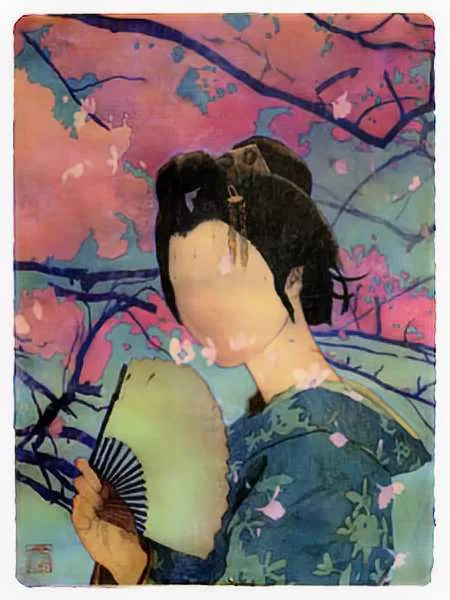As the Obon season approaches, it’s the perfect time to delve into one of Hawai’i’s most intriguing spectral legends—the Nopperabo, also known as the Mujina. This shape-shifting entity, whose name literally translates to “badger,” has fascinated locals and visitors alike with its eerie presence and ghostly tales.
Mysterious Nopperabo: From Badger to Faceless Phantom
The Mujina, in its natural state, resembles a badger and dwells in remote mountainous regions far from human habitation. Its primary role is to ward off intruders by frightening them away from its territory. However, the true Nopperabo is a master of disguise, blending into human society and often appearing as a distressed individual in secluded places.
The legend of the Nopperabo, or faceless ghost, made its first notable appearance on May 17, 1958, in Kaua’i. That evening, a young woman visiting the Wai’alae Drive-In Theatre encountered a chilling sight. While waiting to use the restroom, she noticed another woman in a white kimono brushing her long black hair. When the woman drew closer, the figure turned to reveal a blank, featureless face. The ensuing scream and subsequent stories turned this faceless apparition into a local legend. By 1994, the ghost was said to haunt a well-known shopping mall after the original drive-in theater was demolished.
Nopperabo’s Modern Encounters
Years later, I had the privilege of meeting Bob Krauss, the young reporter who had first covered the Nopperabo story in 1959. He brought a copy of the original article to my workplace, which was an unexpected honor. This encounter highlighted the enduring impact of the Nopperabo legend on local folklore.
Understanding Japanese Ghost Lore: Yokai and Obake
The term “Yokai” is often used as an umbrella term for Japanese supernatural beings, including ghosts, monsters, and demons. Within this category, various entities can shape-shift, with the “Bakemono” or “Obake” being prominent examples.
In Japanese folklore, Obake are known for their ability to transform into different forms, often taking on the guise of household objects or animals. My own childhood experiences in a Waimalu home reflect this. The house, though modern for its time, had a distinctly Japanese interior. Within months, household objects began exhibiting peculiar behaviors. A lamp spun on its pedestal, shoji screens developed inexplicable holes, and my flute played hauntingly on its own, sounding like a Shakuhachi.
In modern Hawai’i, “Obake” has become a catch-all term for ghosts and apparitions. However, a more accurate term for traditional Japanese ghosts is “Yurei.” Yurei are often depicted in films and online as spectral figures in white burial robes with long, disheveled hair. They are bound to a particular location due to unresolved issues from their lives, and only by addressing these matters can they find peace.
The Case of the Faceless Ghost: Fact or Fiction?
Returning to our faceless ghost, the question arises: was her appearance at the drive-in theater in 1958 a stunt to draw more customers, or was it a spontaneous story that evolved over time? Considering the Yurei’s traditional white burial kimono and long black hair, could there have been a mix-up in the legends? Was the Nopperabo adapting to its new environment, choosing to haunt a women’s restroom in a drive-in theater?
While the true nature of the Nopperabo’s appearance may remain a mystery, the legend itself endures. The original Wai’alae Drive-In Theatre no longer stands, but the nearby shopping mall continues to host stories of the faceless ghost. This enduring narrative serves as a testament to the powerful intersection of folklore and modern life.
Conclusion
The Nopperabo’s legend, along with its related terms like Mujina, Obake, and Yurei, illustrates the rich tapestry of Japanese ghost lore and its integration into Hawaiian culture. Whether viewed through the lens of historical accounts or personal experiences, these stories reflect our fascination with the supernatural and our desire to understand the unknown.
As we enter the Obon season, the tales of the Nopperabo and other spectral entities remind us of the enduring power of folklore. They invite us to explore the mysteries of the past and consider how these ancient stories continue to shape our present.

